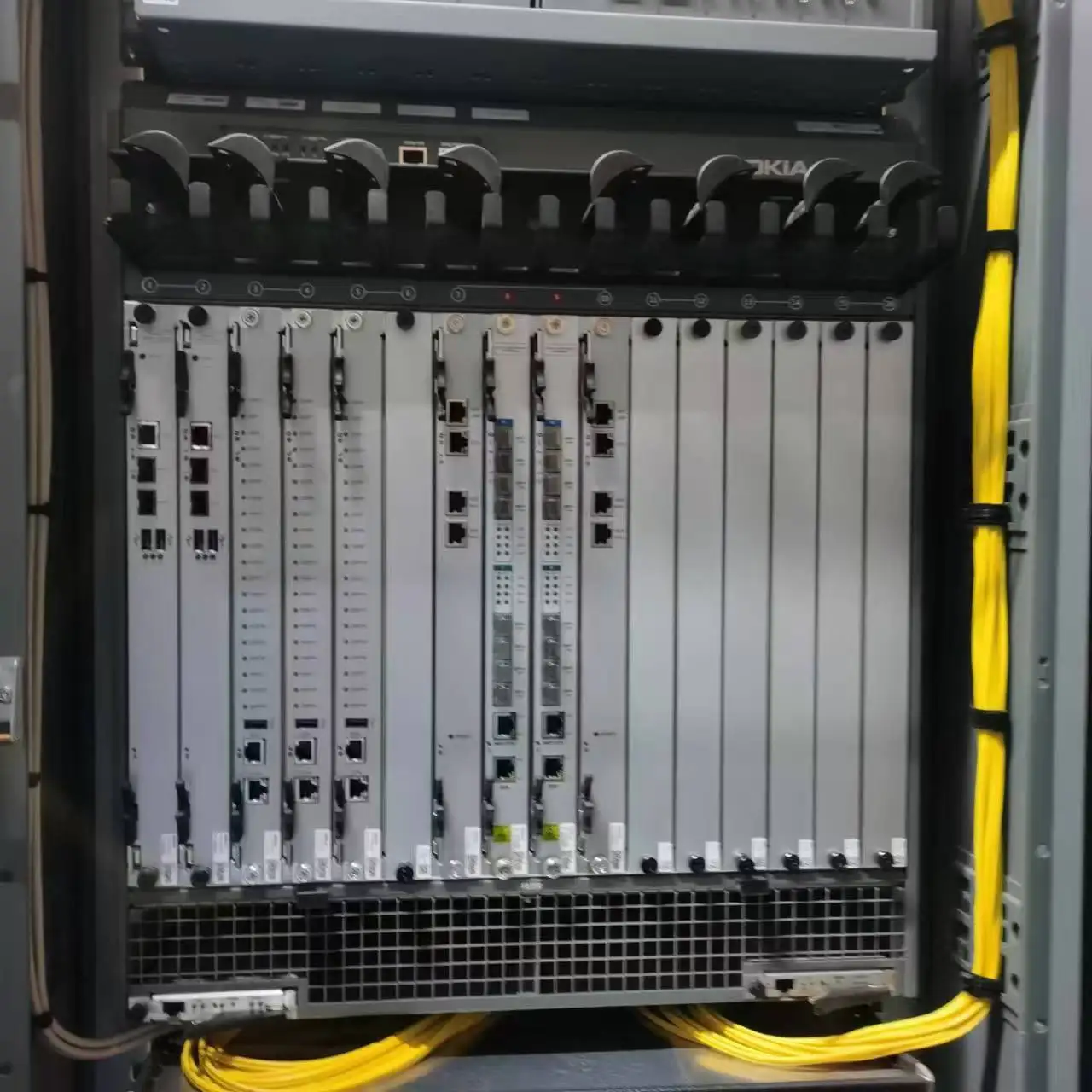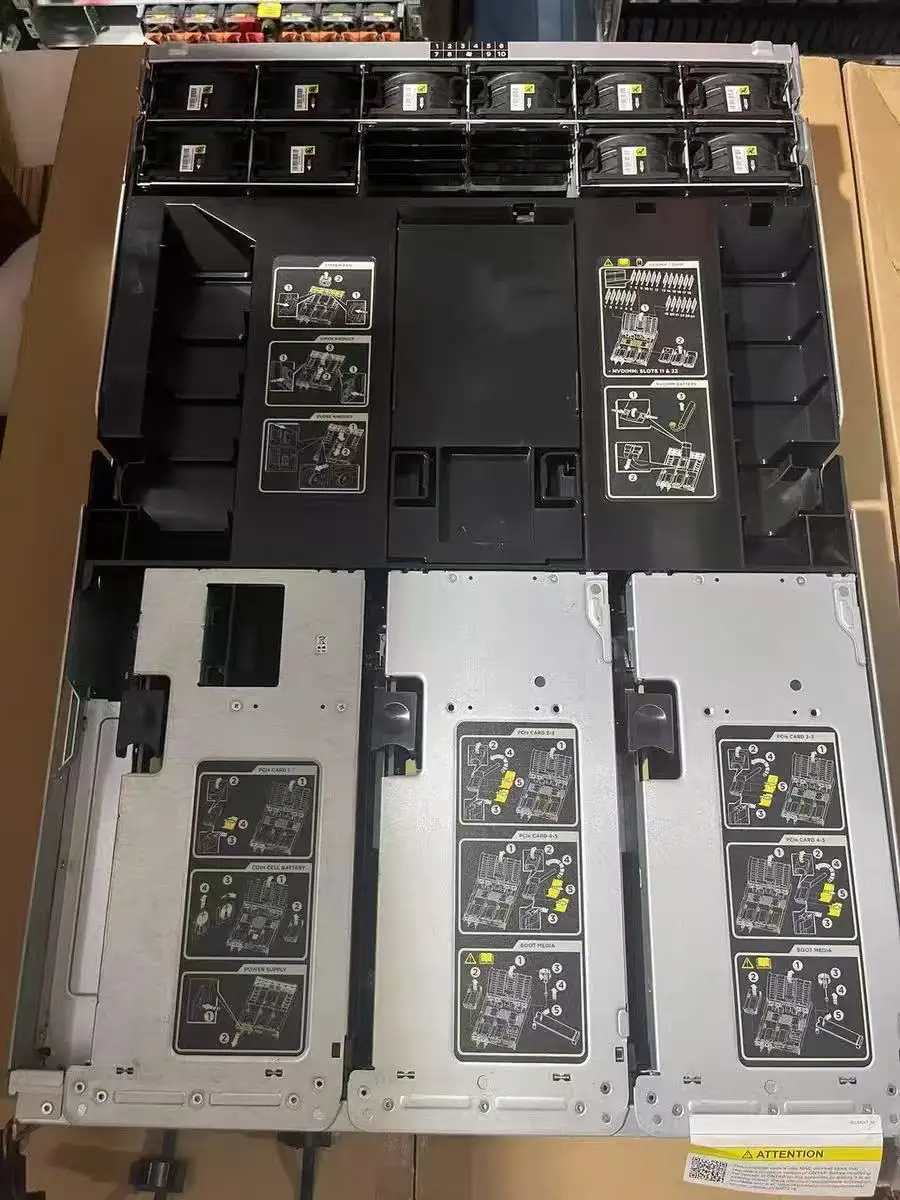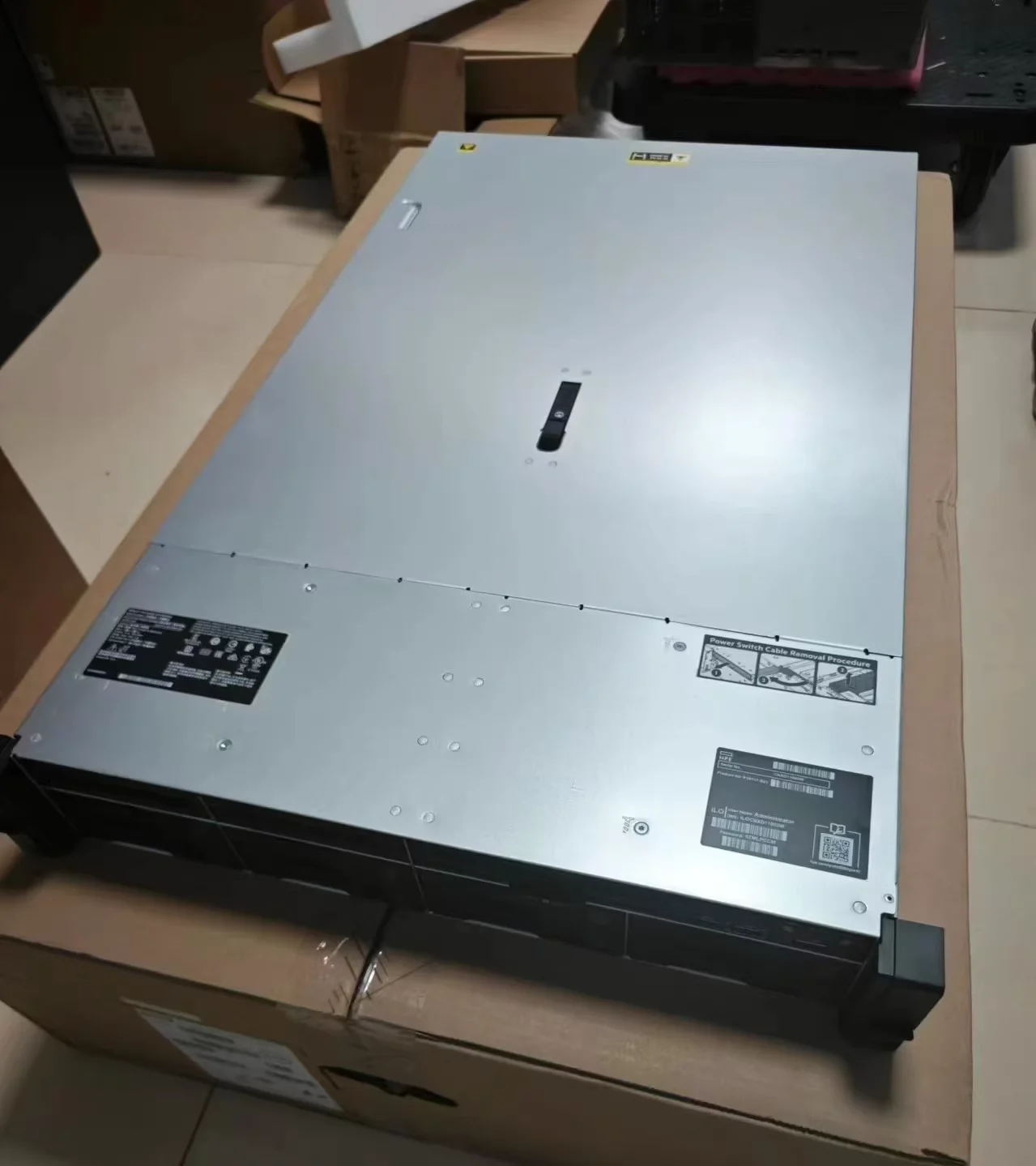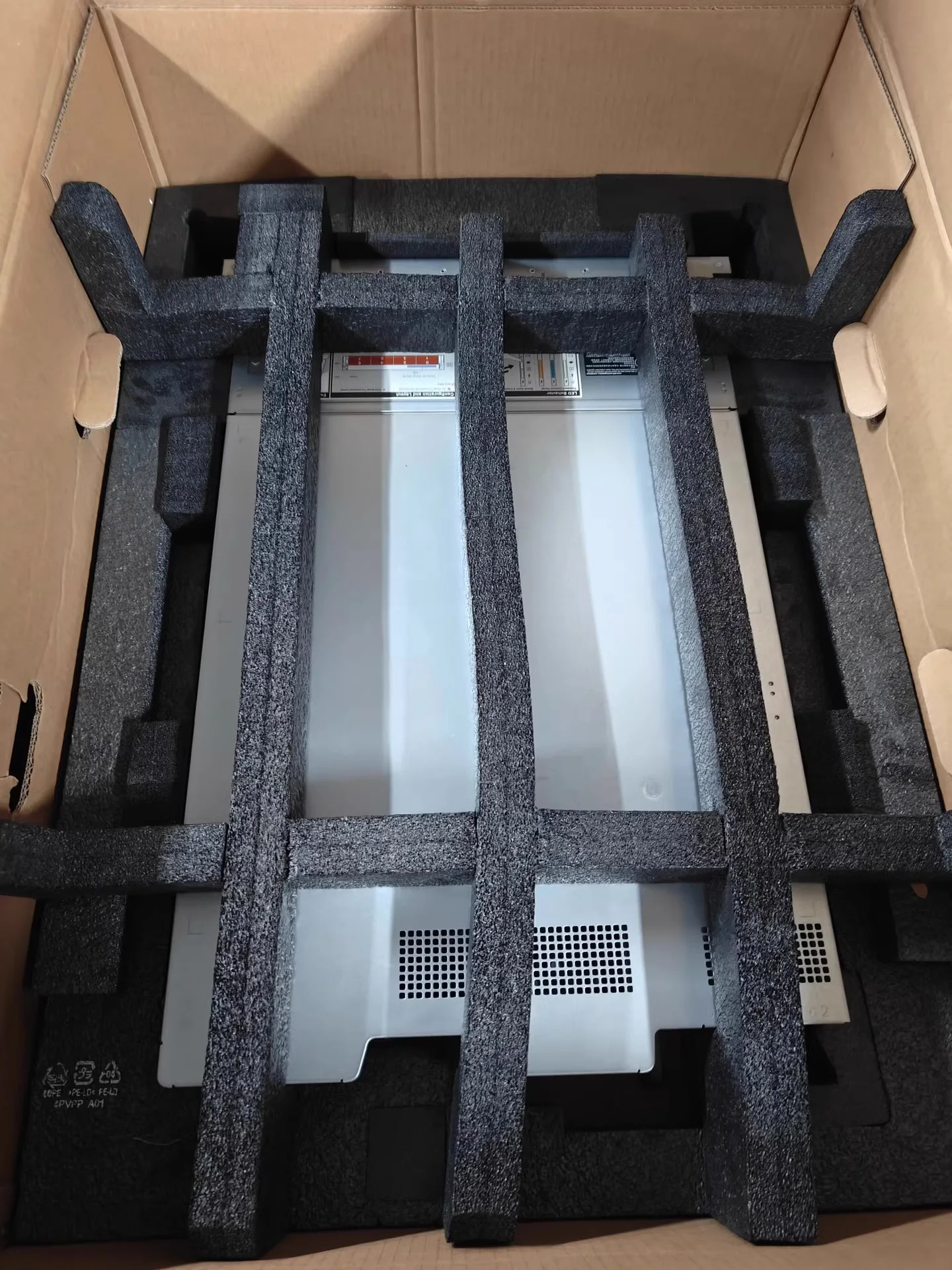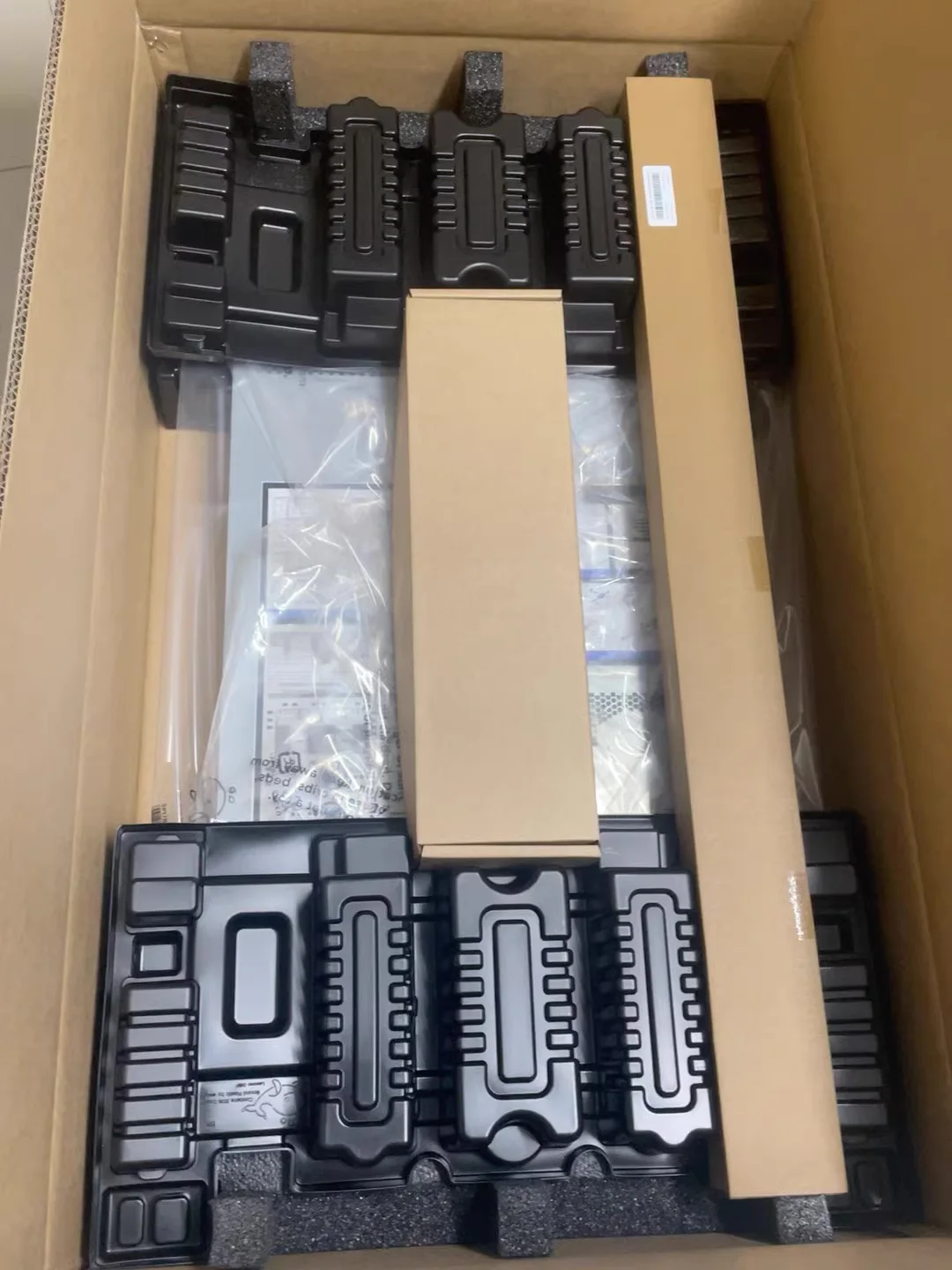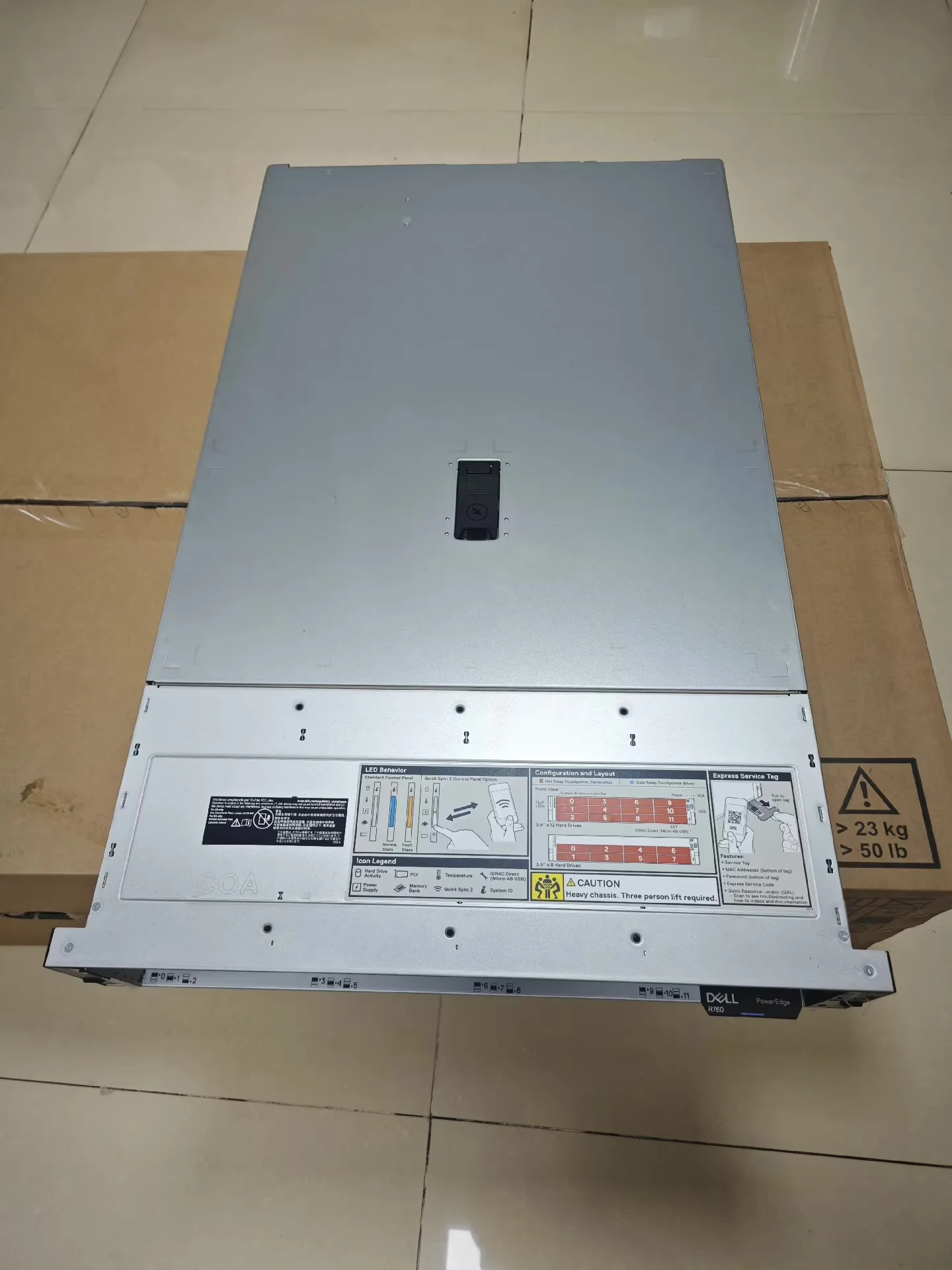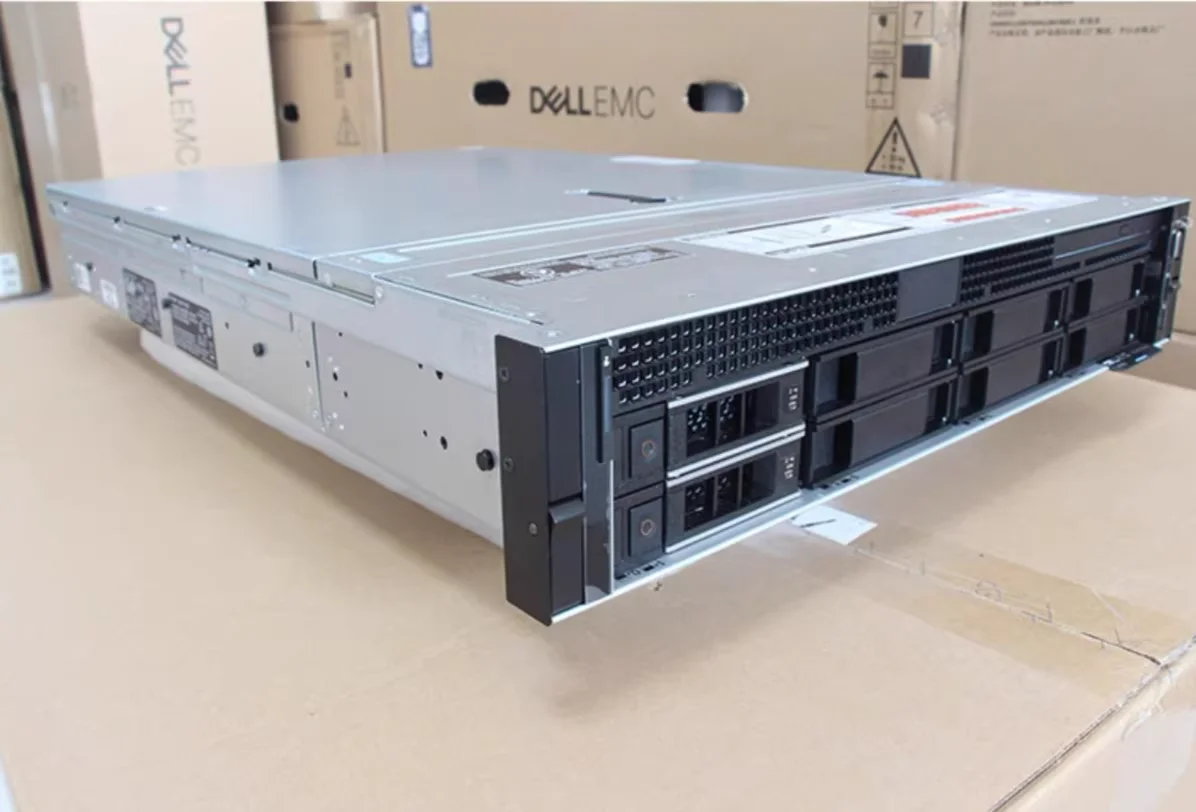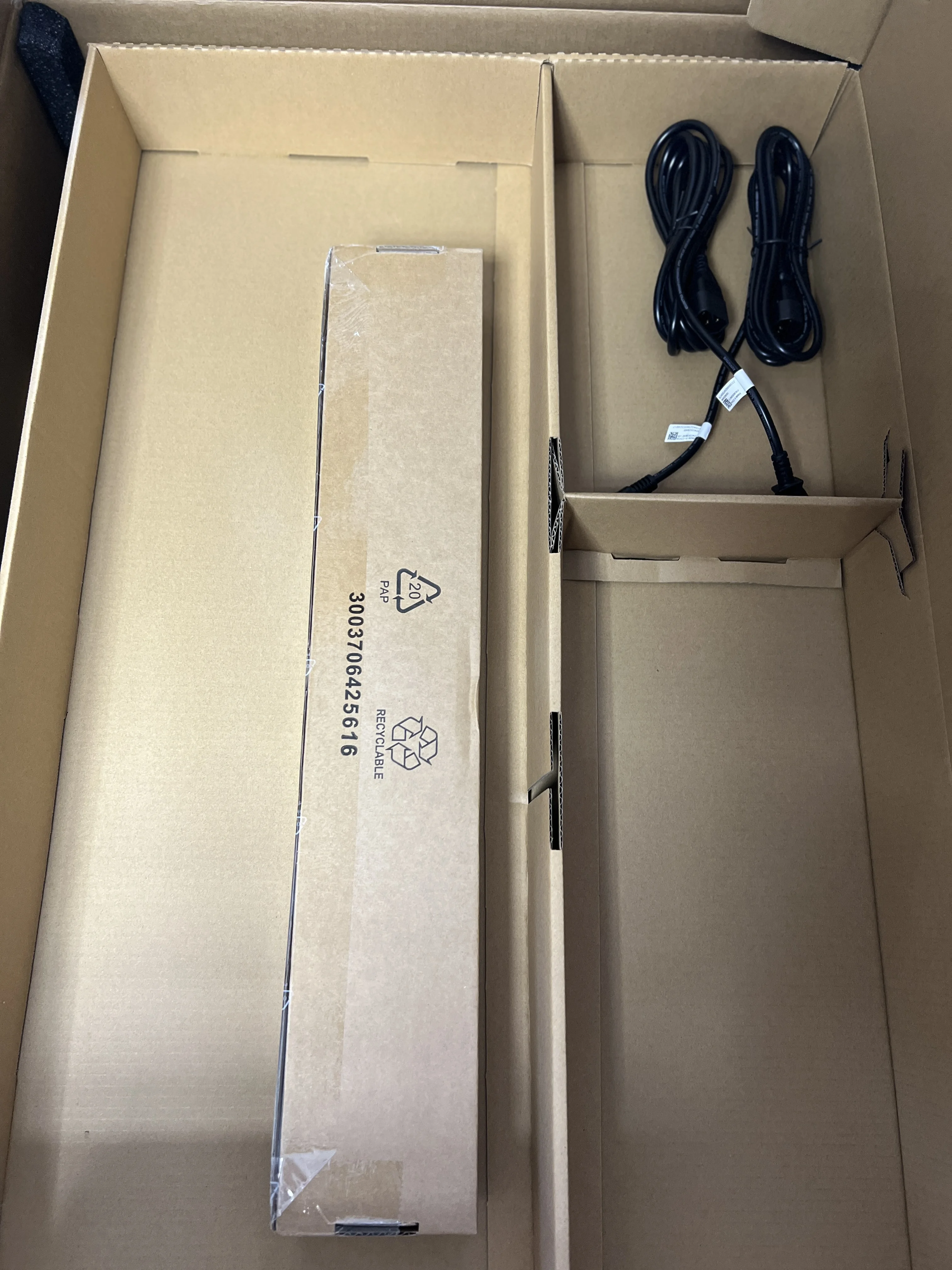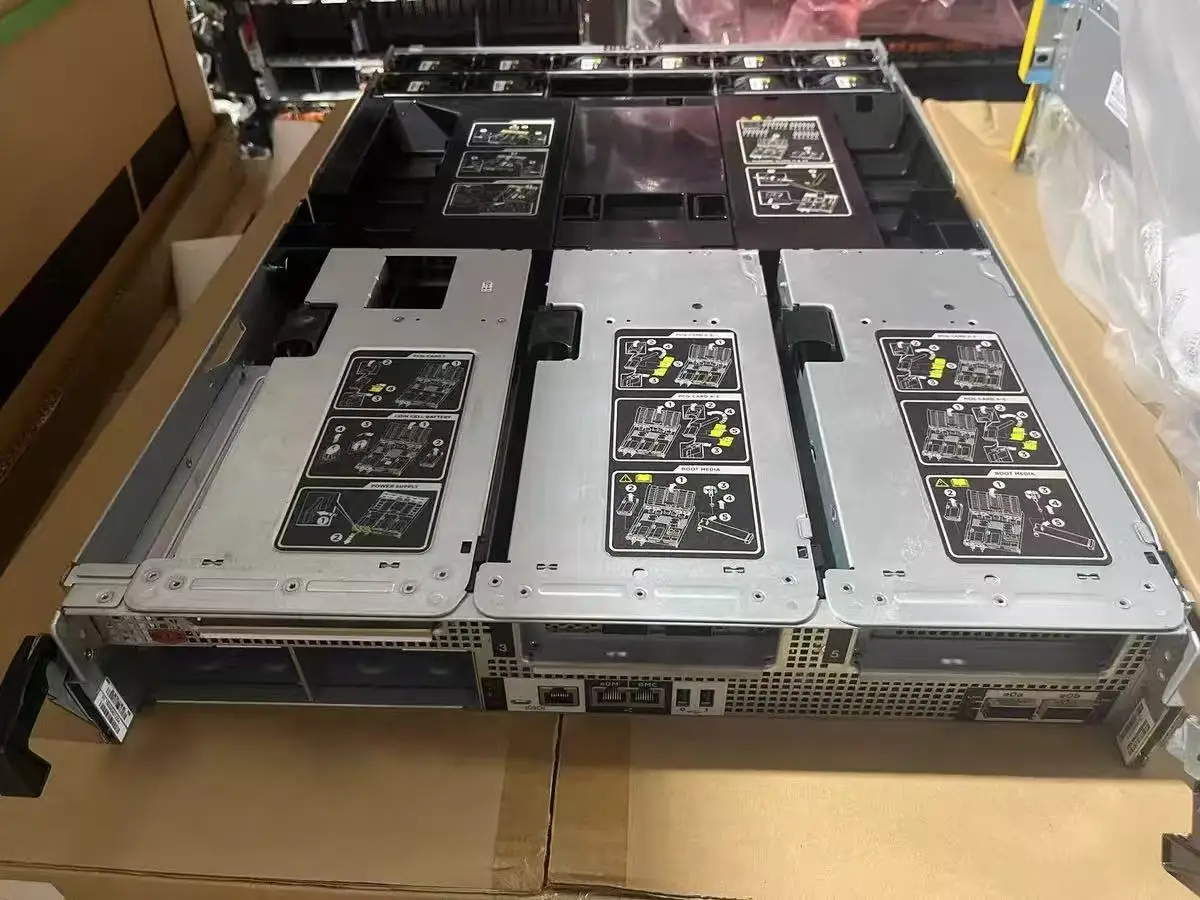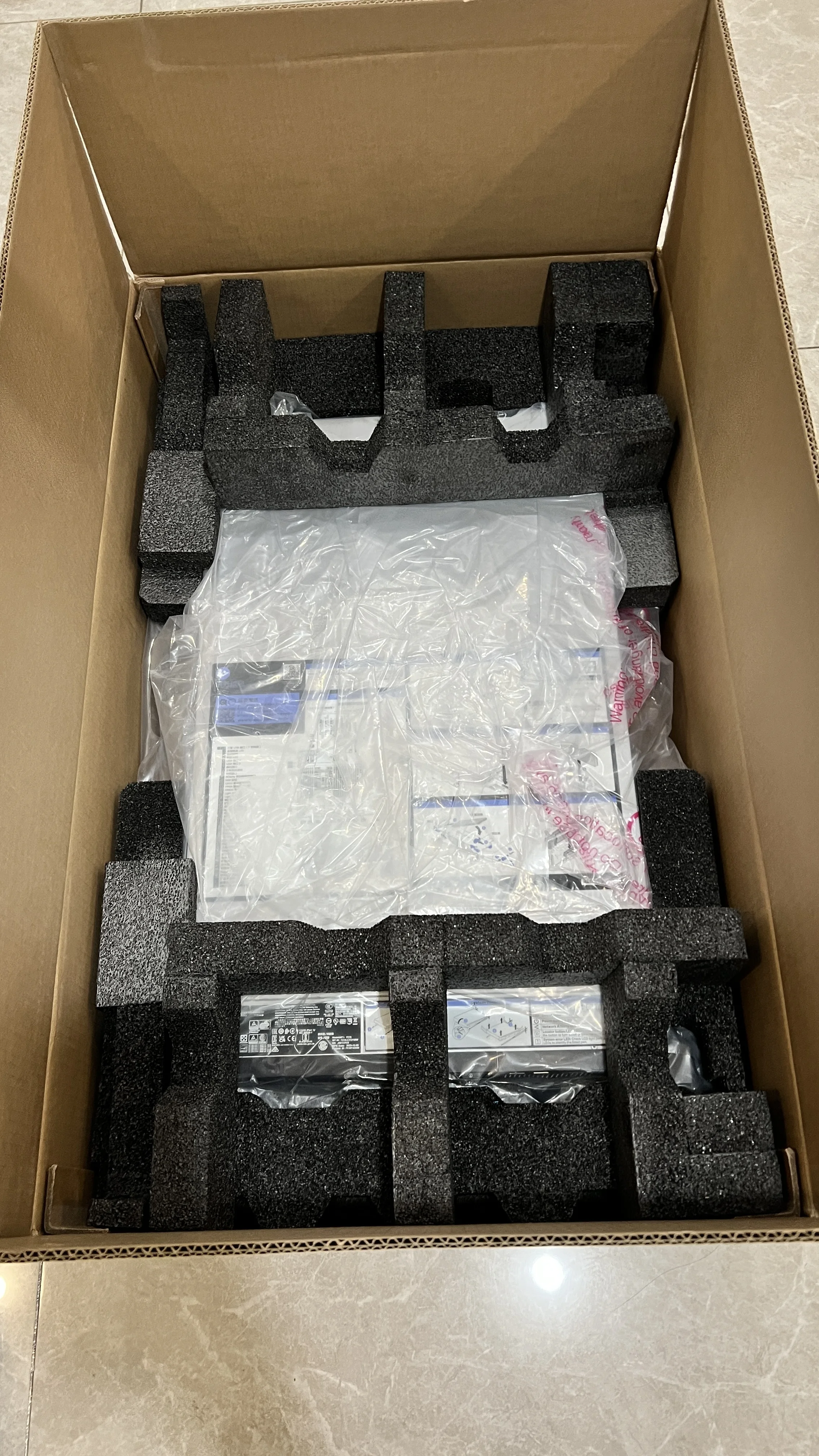High-Density Dell PowerEdge R760 Server | 24-Bay NVMe & SSD Hybrid Configuration
- उत्पाद श्रेणियाँ:सर्वर
- पार्ट नंबर:Dell PowerEdge R760 Server
- उपलब्धता:In Stock
- स्थिति:नया
- उत्पाद की विशेषताएँ:शिपिंग के लिए तैयार
- न्यूनतम आदेश:1 इकाई
- पहले की कीमत:$19,999.00
- आपकी कीमत: $18,643.00 आप बचाते हैं $1,356.00
- अब चैट करें ईमेल भेजें
निश्चिंत रहें। रिटर्न स्वीकार किए जाते हैं।
शिपिंग: अंतर्राष्ट्रीय शिपमेंट में कस्टम शुल्क शामिल हो सकते हैं। विवरण देखें
डिलिवरी: कस्टम क्लियरेंस के कारण अतिरिक्त समय लग सकता है। विवरण देखें
रिटर्न: 14 दिन। रिटर्न शिपिंग विक्रेता द्वारा भुगतान। विवरण देखें
नि:शुल्क शिपिंग। हम NET 30 खरीद आदेश स्वीकार करते हैं।
यदि आपको बड़ी मात्रा में Dell PowerEdge R760 Server चाहिए, तो WhatsApp: (+86) 151-0113-5020 पर कॉल करें या लाइव चैट में उद्धरण का अनुरोध करें।
High-Density Dell PowerEdge R760 Server | 24-Bay NVMe & SSD Hybrid Configuration
Keywords
PowerEdge R760, 24-bay server chassis, Dual Xeon 6526Y, 768GB DDR5 memory, H755 RAID controller, dual 10GbE port NIC, four-port 1GbE NIC, iDRAC9 enterprise, 2400W redundant PSU
Description
The PowerEdge R760 is Dell’s next-generation 2U, two-socket rack server platform, tailored for demanding enterprise tasks such as virtualization, databases, AI inference, and heavy storage workloads. This configuration delivers **24 drive bays**, combining **NVMe and SSD** storage, making it ideal for high-throughput, low-latency applications.
Equipped with **dual Intel Xeon 6526Y** processors (16 cores each, base 2.8 GHz, combined 32 cores at 5.6 GHz turbo), this server strikes a balance between core density and frequency. The **768 GB DDR5 memory** (12 × 64 GB modules) ensures that in-memory databases, caching layers, or virtualization hosts operate with ample headroom.
For storage, this setup uses **8 × 3.2 TB NVMe** drives for ultra-fast I/O paths, plus **4 × 480 GB SSDs** and **6 × 2.4 TB SSDs** configured behind a **PERC H755 RAID controller**, giving both performance and redundancy. Network connectivity is handled by a dual-port 10 GbE NIC (57414), plus a four-port 1 GbE NIC (5270), ensuring broad bandwidth for data traffic and cluster link connectivity.
Remote management and monitoring is enabled via **iDRAC9 Enterprise**, and the system is powered by **dual 2400 W redundant power supplies**, ensuring resilience in mission-critical environments. Rail kits and standard accessories complete the setup. In summary, this configuration is engineered for high capacity, high performance, and enterprise reliability.
Key Features
- Dual Intel Xeon 6526Y CPUs, 16 cores each, up to 5.6 GHz combined turbo
- 768 GB DDR5 ECC memory (12 × 64 GB modules)
- 24-bay chassis with hybrid NVMe + SSD support
- 8 × 3.2 TB NVMe (high throughput), plus 4 × 480 GB SSD + 6 × 2.4 TB SSD for mixed workloads
- PERC H755 RAID controller for robust data integrity and performance
- Dual-port 10 GbE NIC (57414) + four-port 1 GbE NIC (5270) for network flexibility
- iDRAC9 Enterprise for out-of-band management and monitoring
- Dual 2400 W hot-swap redundant power supplies for fault tolerance
Configuration
| Component | Specification |
|---|---|
| Model | Dell PowerEdge R760 (24-bay chassis) |
| Processors | 2 × Intel Xeon 6526Y (16 cores @ 2.8 GHz base) — up to 32 cores / 5.6 GHz turbo combined |
| Memory | 768 GB DDR5 ECC (12 × 64 GB) |
| NVMe Storage | 8 × 3.2 TB NVMe |
| SSD Storage | 4 × 480 GB SSD + 6 × 2.4 TB SSD |
| RAID Controller | PERC H755 |
| Network Interface Cards | 1 × dual-port 10 GbE (57414), 1 × quad-port 1 GbE (5270) |
| Management | iDRAC9 Enterprise |
| Power Supply | 2 × 2400 W redundant (hot-swappable) |
| Accessories | Rail kit, bezel, cabling |
Compatibility
This system supports standard enterprise operating systems including Microsoft Windows Server, Red Hat Enterprise Linux, SUSE Linux Enterprise Server, VMware ESXi, Ubuntu LTS, and other Linux distributions. It also supports typical enterprise virtualization stacks and container platforms.
Storage compatibility extends to NVMe Gen4 U.2 / U.3 devices, SAS/SATA SSDs and HDDs. The PERC H755 controller supports a mix of SSD and NVMe devices. The NICs (10 GbE and 1 GbE) are compatible with common switches and routers in data centers. iDRAC9 works with Dell OpenManage tools and SNMP for integrated management.
Usage Scenarios
This high-density configuration is ideal for virtualization clusters (e.g. VMware, Hyper-V) where many VMs share high I/O storage. The combination of NVMe and SSD ensures that hot data enjoys extremely low latency while colder data is still stored securely.
Database servers (e.g. SQL, PostgreSQL) benefit from the fast NVMe layer for transaction logs or indexes, while the SSD pool handles larger table storage. In analytics, caching, or in-memory workloads, the 768 GB memory capacity helps guarantee that working sets stay resident in RAM.
It is also suited for hybrid cloud or private cloud infrastructures, where network throughput requirements demand both 10 GbE and 1 GbE connections. The redundancy in power and I/O ensures business continuity in mission-critical deployments.
Use in AI inference or HPC environments is possible—though for GPU acceleration, check slot compatibility and thermal budget. Even without accelerators, the compute and memory specs support many compute-intensive applications.
Frequently Asked Questions (FAQs)
1. Can this R760 setup support GPU cards or accelerators?
Yes, the Dell R760 supports GPU / accelerator options (double-width or single-width) depending on riser configuration and cooling. You must verify that your selected chassis configuration has adequate space, cooling, and power budget before installing GPUs.
2. How is the NVMe + SSD mix typically configured for performance?
In such mixed storage setups, NVMe drives often host the highest I/O, latency-sensitive data (e.g. logs, cache, indexes), while the SSDs (480 GB and 2.4 TB) house bulk storage or less performance-critical data. The PERC H755 controller can manage multiple tiers and caching strategies.
3. What happens if one power supply fails?
Because this configuration uses **dual 2400 W redundant power supplies**, the server continues running even if one unit fails, provided the remaining supply can handle the load (which in this build it should). The faulty PSU can be hot-swapped without downtime.
4. Is 768 GB enough memory for virtualization or database workloads?
For many enterprise virtualization or database deployments, 768 GB is more than sufficient, especially when combined with fast NVMe storage. However, if your workload requires very large in-memory datasets, you may scale further (if your BIOS and platform support higher capacity) depending on vendor specifications.
संबंधित उत्पाद
-
HPE ProLiant DL385 Gen11 GPU CTO Server with 8 × N... - पार्ट नंबर: HPE ProLiant DL385 G...
- उपलब्धता:In Stock
- स्थिति:नया
- पहले की कीमत:$129,999.00
- आपकी कीमत: $106,365.00
- आप बचाते हैं $23,634.00
- अब चैट करें ईमेल भेजें
-
Optimized Dell PowerEdge R760 with Dual Xeon 6548Y... - पार्ट नंबर: PowerEdge R760...
- उपलब्धता:In Stock
- स्थिति:नया
- पहले की कीमत:$23,000.00
- आपकी कीमत: $19,800.00
- आप बचाते हैं $3,200.00
- अब चैट करें ईमेल भेजें
-
Lenovo WA5480G3 8-GPU AI/Compute Server Configurat... - पार्ट नंबर: Lenovo WA5480G3...
- उपलब्धता:In Stock
- स्थिति:नया
- पहले की कीमत:$349,999.00
- आपकी कीमत: $320,629.00
- आप बचाते हैं $29,370.00
- अब चैट करें ईमेल भेजें
-
High-Density Dell PowerEdge R760 Server | 24-Bay N... - पार्ट नंबर: Dell PowerEdge R760 ...
- उपलब्धता:In Stock
- स्थिति:नया
- पहले की कीमत:$19,999.00
- आपकी कीमत: $18,643.00
- आप बचाते हैं $1,356.00
- अब चैट करें ईमेल भेजें
-
Dell PowerEdge R740xd सर्वर - भाग संख्या 210-AMTE... - पार्ट नंबर: R740xd Server...
- उपलब्धता:In Stock
- स्थिति:नया
- पहले की कीमत:$14,999.00
- आपकी कीमत: $13,958.00
- आप बचाते हैं $1,041.00
- अब चैट करें ईमेल भेजें
-
Dell PowerEdge R640 Dual Xeon Gold 5218R, 768 GB D... - पार्ट नंबर: Dell PowerEdge R640...
- उपलब्धता:In Stock
- स्थिति:नया
- पहले की कीमत:$5,499.00
- आपकी कीमत: $4,325.00
- आप बचाते हैं $1,174.00
- अब चैट करें ईमेल भेजें
-
डेल पॉवरएज R660 डुअल ज़ीऑन गोल्ड 6542Y | 64 जीबी ड... - पार्ट नंबर: Dell PowerEdge R660...
- उपलब्धता:In Stock
- स्थिति:नया
- पहले की कीमत:$19,999.00
- आपकी कीमत: $16,329.00
- आप बचाते हैं $3,670.00
- अब चैट करें ईमेल भेजें
-
Dell PowerEdge R660 Dual Xeon Gold 6526Y, 64 GB DD... - पार्ट नंबर: Dell PowerEdge R660...
- उपलब्धता:In Stock
- स्थिति:नया
- पहले की कीमत:$9,999.00
- आपकी कीमत: $8,700.00
- आप बचाते हैं $1,299.00
- अब चैट करें ईमेल भेजें







